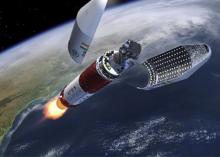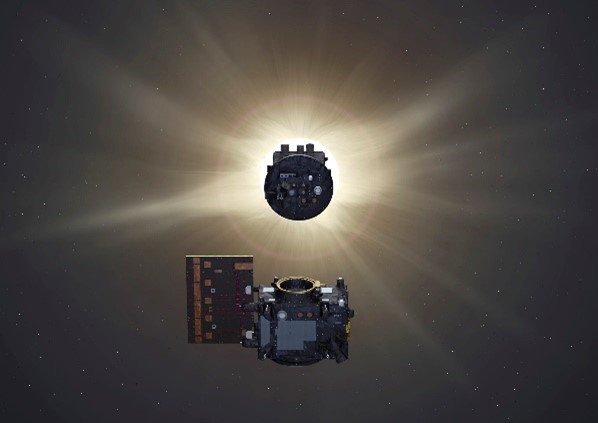
A journey of over ten years comes to an end. On Thursday, December 5th, at 12:34 Greek time, the successful launch of ESA's PROBA-3 mission took place using the PSLV-XL rocket from the Satish Dhawan Space Centre in Sriharikota, India.
You can watch the successful launch via the following link:
https://www.youtube.com/watch?v=PJXXLLw0PBI
ESA's PROBA-3 mission is the first in the world to demonstrate the innovative satellite formation flying technology through a large-scale scientific experiment. The PROBA-3 satellite pair will form a giant coronagraph 60,000 km away from Earth, with one satellite (the Occulter) equipped with a 1.4-meter occulting disk to completely block the bright solar disk from the second satellite (the Coronagraph), which carries the optical instrument. This will create an artificial solar eclipse lasting six hours in every orbit.

The solar corona images will be captured by the ASPIICS space instrument, developed at the Centre Spatial de Liège (CSL) with support from several teams, including the Greek space technology team (Space Upstream) of the Laboratory of Digital Systems and Computer Architecture (DSCAL) of the National and Kapodistrian University of Athens (NKUA). The team is led by Professor Antonios Paschalis, from the Department of Informatics and Telecommunications, serving as Local Instrument Manager. Under the technical supervision of Associate Professor Nektarios Kranitis, Space Electronics Manager, DSCAL constructed and delivered to CSL a pioneering space-grade FPGA hardware accelerator for compressing space images using the CCSDS 121.0 Lossless Data Compression standard. The device successfully passed all ESA quality technical checks (TRL-8), confirming its suitability for space missions.

One of ASPIICS's main scientific goals is to solve a significant mystery: why the solar corona is thousands of times hotter than the solar photosphere. ASPIICS will also study coronal mass ejections (CMEs), massive explosions of hot plasma from the Sun responsible for space weather, which have a major impact on Earth. This experiment will enable continuous scientific observation of the solar corona.
On the Greek side, the scientific team defining the requirements and analyzing the data from ASPIICS is led by Professor Emeritus Kanaris Tsinganos of the NKUA's Department of Physics. Tsinganos was one of the initiators of ESA's PROBA-3 mission, serving as Greece's national representative in the ESA Science Program Committee since 2005.
The Faculty of Science at the National and Kapodistrian University of Athens continues to innovate and lead in Aerospace Science and Technology, not only in research and development by participating in key space missions but also in education. It offers comprehensive academic programs in Greece for the first time, including undergraduate courses through the Department of Aerospace Science and Technology (AST) and postgraduate programs through the Interinstitutional Master's Program titled “Space Technologies, Applications, and Services (STAR).”
